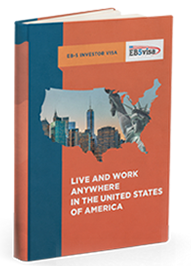Questions and Answers for EB-5 New Regulations
Latest Update – As declared by United States Citizenship & Immigration Services on July 24, 2019, the anticipated final rule has taken effect on Thursday, November 21, 2019. The minimum EB-5 investment amount has increased from US$500,000 to US$900,000 plus the processing overhead cost, legal and filing fees for the project which is located in a TEA. For the project not located in a TEA, the amount has increased from US$1 million to US$1.8 million plus the processing overhead cost, legal and filing fees.
1. When will the new regulations come into effect?
USCIS has declared that the new EB-5 regulations will become effective on November 21, 2019 by introducing the Final Rule. The highlight of the final rule indicated the hike of investment amount. Henceforth, the previous amounts of $500,000 and $1 million will be replaced by $900,000 and $1.8 million for TEA (Targeted Employment Areas) and non-Tea areas respectively plus the processing overhead cost, legal and filing fees.
2. Will the investment amount remain the same permanently?
Investment amounts will be raised and adjusted every 5 years factoring in economic conditions of the United States. This will enable the stakeholders to predict the economic turbulences and plan their business model accordingly.
3. Will “proxy” I-526 petitions filed before the date of effect be considered?
No placeholder petitions will be considered for the namesake. According to the USCIS policies, I-526 petition must be filed with substantial evidence to prove the investor’s financial abilities. Investors trying reserve an investment with the current $500,000 threshold with no or insufficient evidence are likely to be denied visa by the USCIS.
4. Is the investor obligated to abide by the new EB-5 regulation after the approval of I-526 visa petition before November 21, 2019?
If all the documents and the funds are in place and the petitioner properly files I-526 before the effective date, the USCIS will consider and approve the EB-5 visa under the old regulations before the Final Rule was declared.
5. Has the number of visas available changed with the introduction of the Final Rule?
Although no official change has been declared in the number of visas, there will be fluctuations before and after the effective date. The increase in the investment thresholds to $900,000 and $1.8 million after November 21, 2019 is likely to increase the number of applicants and visas distributed before the date. On the other hand, with the introduction of the Final Rule, number of EB-5 visas may observe a dramatic decline mainly because the USCIS hasn’t yet issued rules for TEA designation.
6. Do the derivative family members who are lawful permanent residents need to independently file a petition to remove conditions?
Yes. Apart from the family members mentioned in the principal investor’s petition to remove conditions, derivative family members must independently file to remove conditions on their permanent residence. The rule has revised regulation to emphasize on the matter. As a result, adjudication becomes easier and it provides location flexibility for the interview for issuing Green Cards.
7. Is it advisable for the investors to carry on with the process before the effective date?
It mainly depends on where the investor’s priorities lie at. Certain investors for whom the reduced current amounts of $500,000 and $1 million matter significantly may go ahead with the process right away. Investors prioritizing U.S. residency and investment returns may also go ahead with the process before the effective date. But these investors must not hurry too much and go about with the process with the expertise of the experienced EB-5 lawyers. Hasting through the process by skipping due diligence, skimping on source of funds or pushing premature projects will create loopholes in the I-526 petition ultimately leading to the denial of visa. It is therefor advisable to carry out the process patiently with professional assistance.
8. What is the underlying condition for an investment project to be available at $900,000?
The Targeted Employment Areas (TEAs) will be designated by USCIS at the investment amount of $900,000 on and after November 21, 2019. The Final Rule commands that TEAs will first be inspected and certified by the Department of Homeland Security (DHS). DHS will also play a role in the procedure for removing conditions on permanent residency.



 English
English.png) Chinese(Simplified)
Chinese(Simplified) Italian
Italian Polish
Polish Portuguese
Portuguese Russian
Russian Spanish
Spanish





